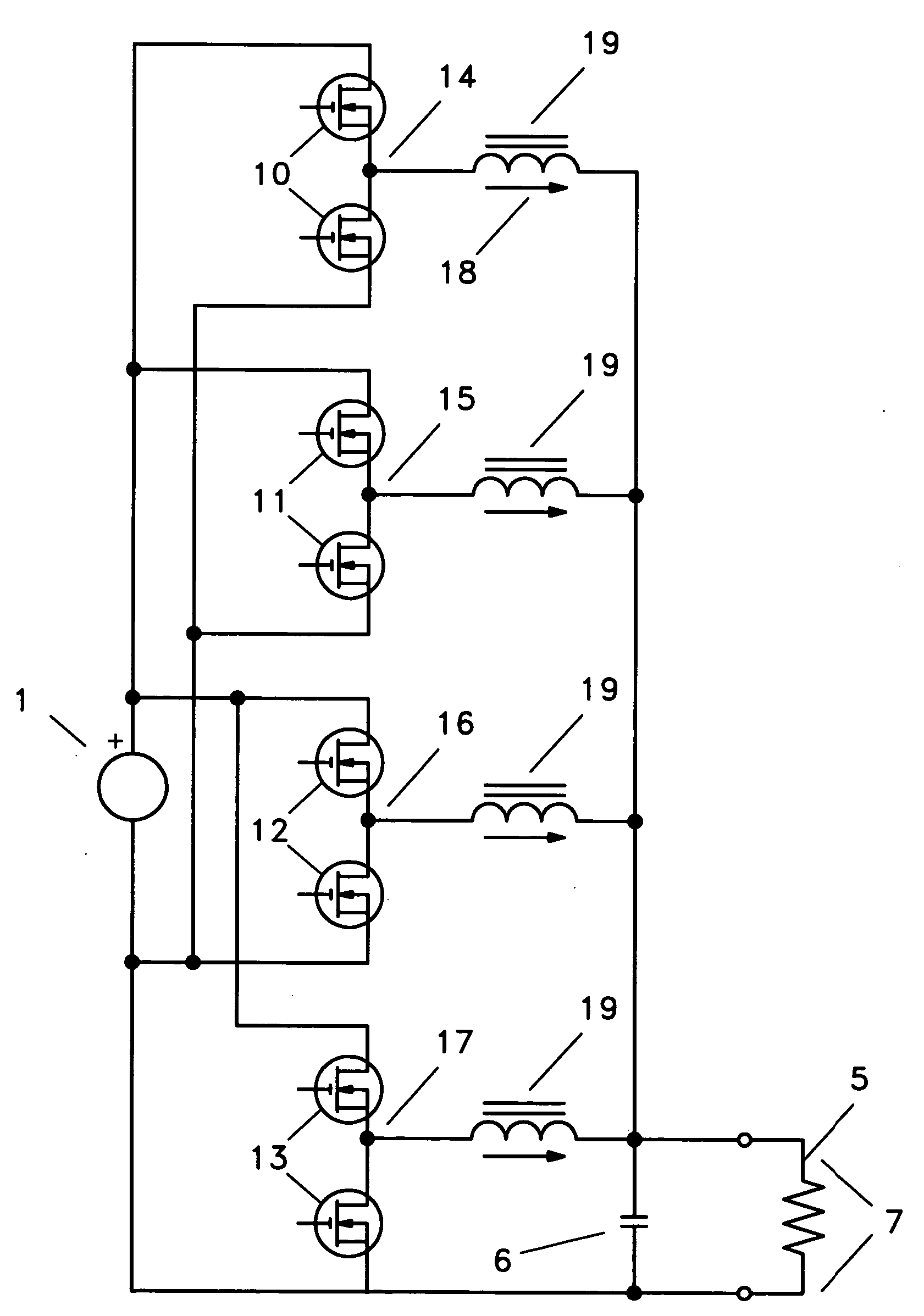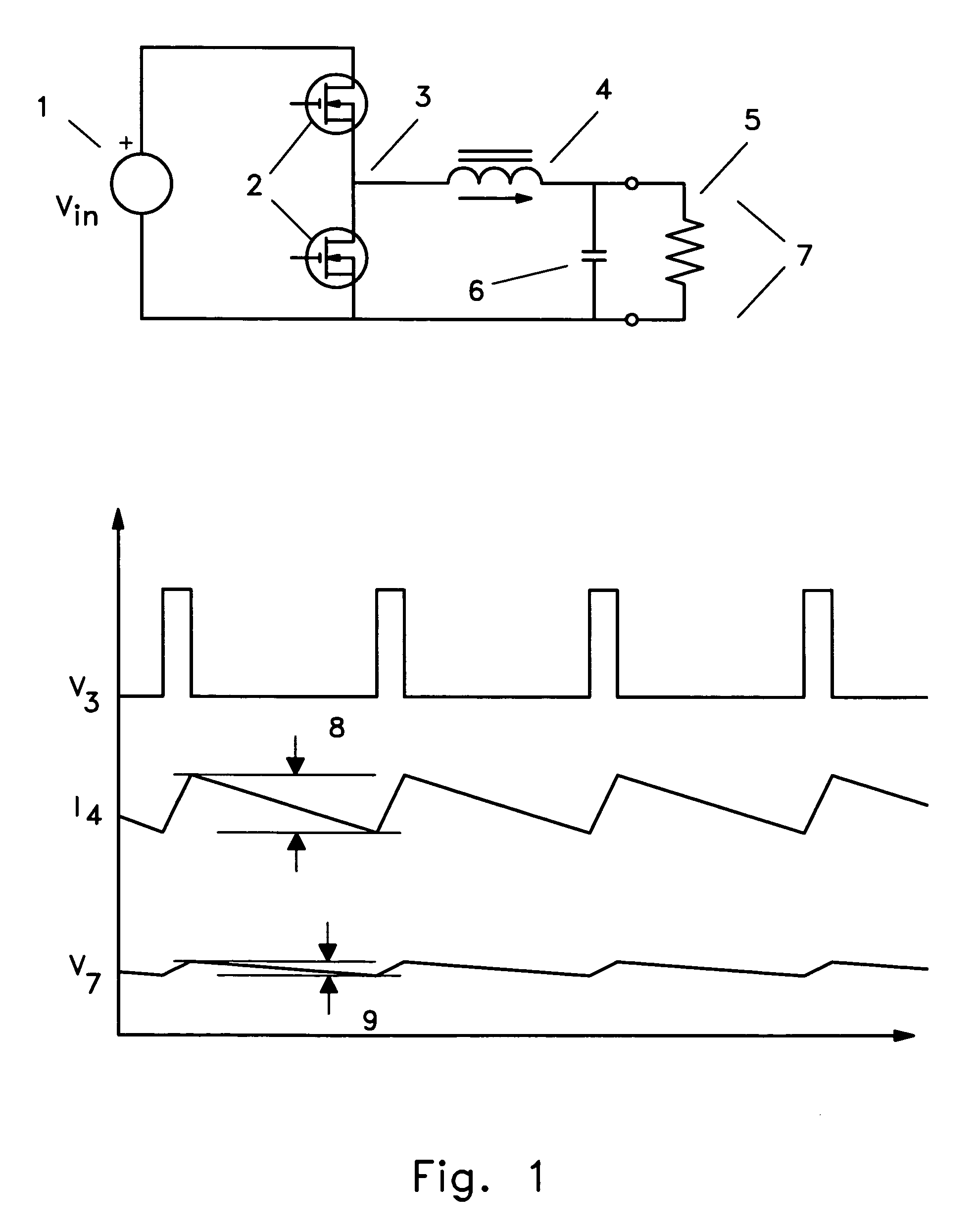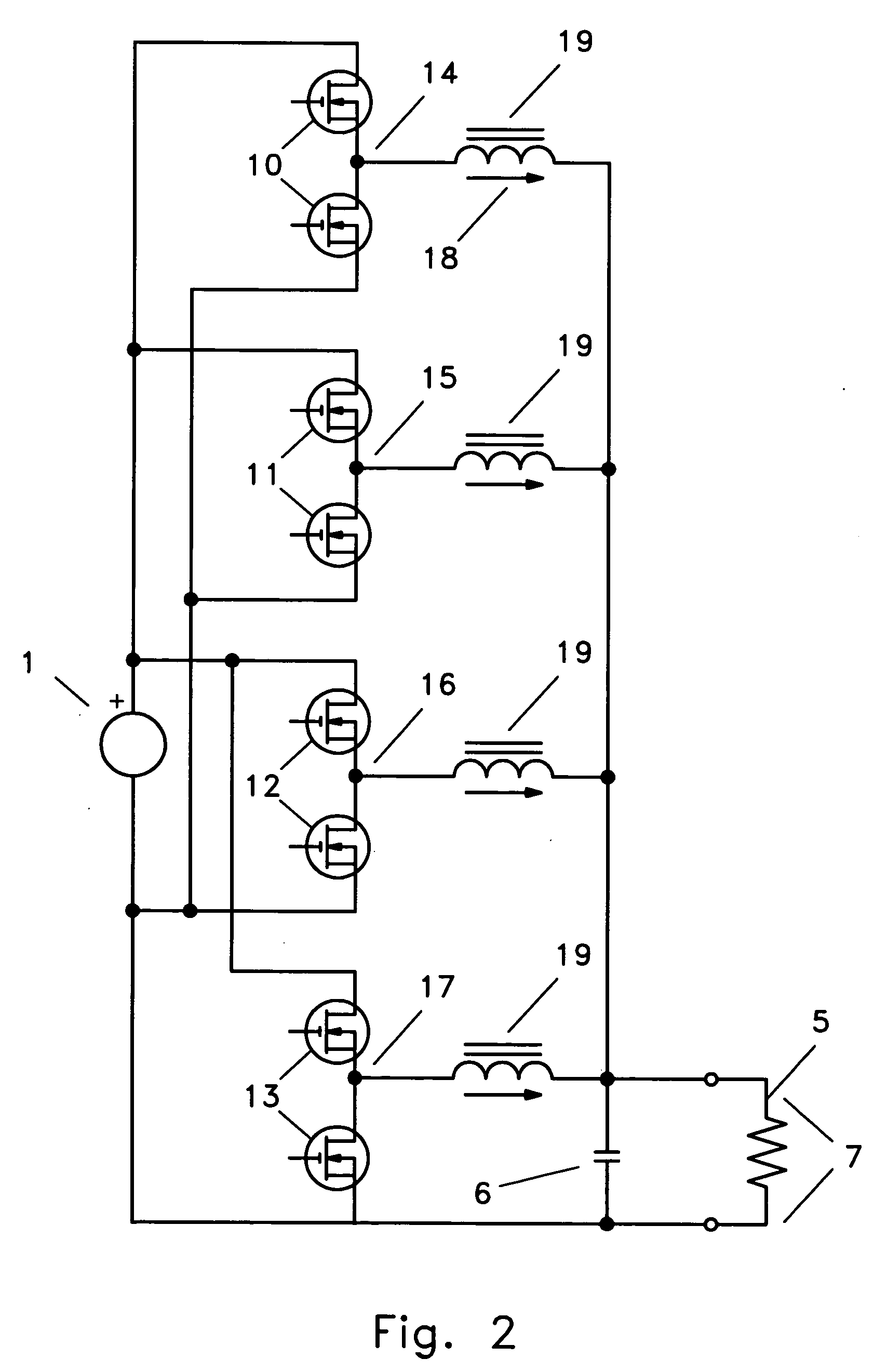Multiple power converter system using combining transformers
a transformer and power converter technology, applied in the direction of power conversion systems, dc-dc conversion, instruments, etc., can solve the problems of reducing the operating voltage of microprocessors, limiting the removal of heat, and affecting the efficiency of power conversion, etc., to achieve high efficiency, reduce costs, and fast response
- Summary
- Abstract
- Description
- Claims
- Application Information
AI Technical Summary
Benefits of technology
Problems solved by technology
Method used
Image
Examples
Embodiment Construction
[0055] As can be easily understood, the basic concepts of the present invention may be embodied in a variety of ways. These concepts involve both processes or methods as well as devices to accomplish such. In addition, while some specific circuitry is disclosed, it should be understood that these not only accomplish certain methods but also can be varied in a number of ways. As can be seen from the drawings, the basic concepts of the present invention may be embodied in many different ways. Importantly, as to all of the foregoing, all of these facets should be understood to be encompassed by this disclosure.
[0056] In the production of a low regulated dc voltage from a higher voltage source, the so-called "buck" converter may be commonly used. This converter, illustrated in FIG. 1, may be considered a simple circuit with generally four basic components: two electronic switches, one inductor, and one capacitor. If the output voltage is large compared with the voltage drop across a dio...
PUM
 Login to View More
Login to View More Abstract
Description
Claims
Application Information
 Login to View More
Login to View More - R&D
- Intellectual Property
- Life Sciences
- Materials
- Tech Scout
- Unparalleled Data Quality
- Higher Quality Content
- 60% Fewer Hallucinations
Browse by: Latest US Patents, China's latest patents, Technical Efficacy Thesaurus, Application Domain, Technology Topic, Popular Technical Reports.
© 2025 PatSnap. All rights reserved.Legal|Privacy policy|Modern Slavery Act Transparency Statement|Sitemap|About US| Contact US: help@patsnap.com



